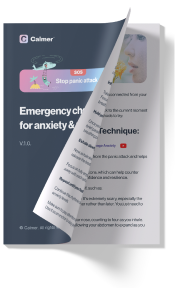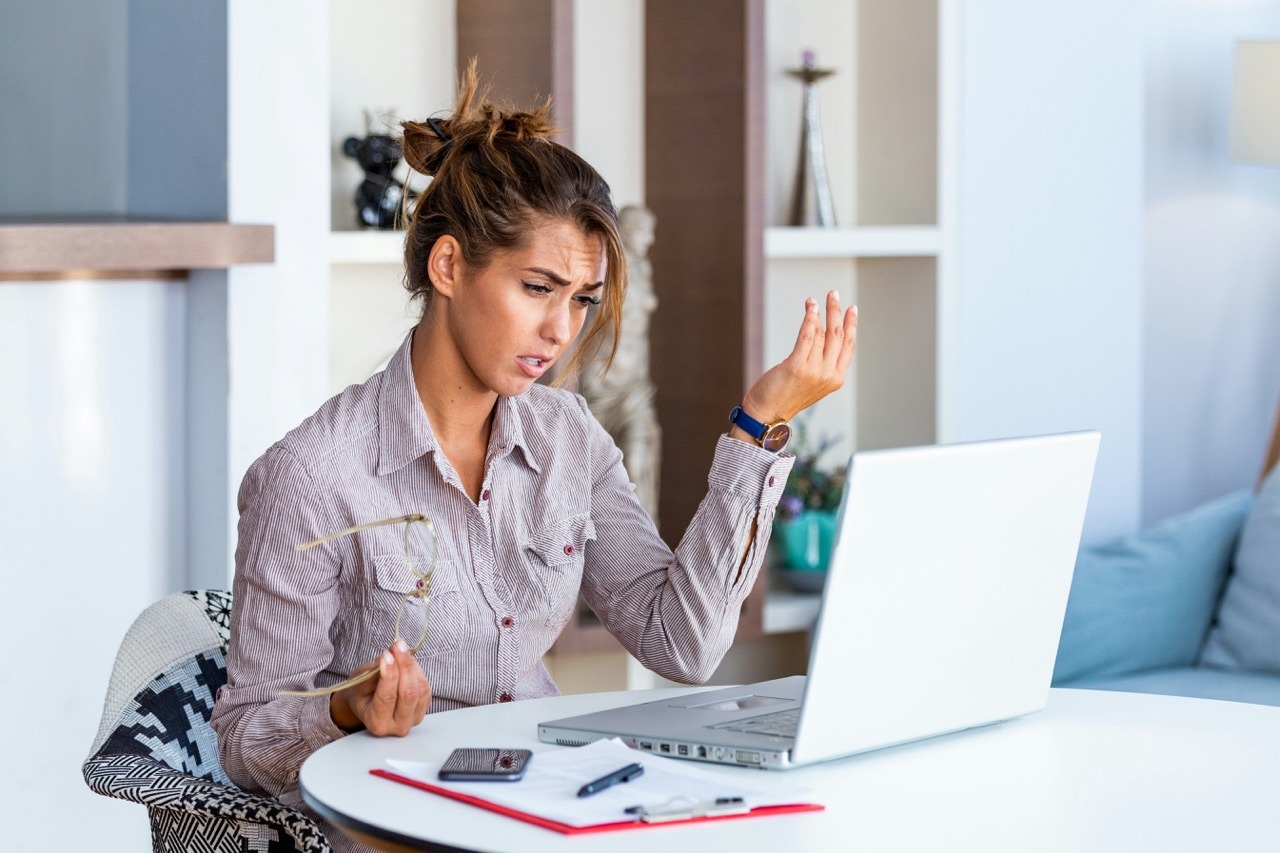Have you ever been in a situation where you are sitting opposite someone who is experiencing an anxiety attack? They appear anxious, struggle to express themselves, and find it difficult to become calm. Clearly, when a close person is having an anxiety attack, it can be frightening, but you must remain calm and search for methods to assist individuals dealing with anxiety.
The positive thing is that you don’t have to be a doctor to offer support in difficult times like these. Continue reading for six no-cost methods of assisting individuals who suffer from anxiety.
Knowing Anxiety
To effectively support your loved ones dealing with anxiety, you should learn to recognize the symptoms of anxiety. According to the American Psychological Association, anxiety is a feeling of worry and distress in response to a future danger.
Anxiety typically manifests through a set of recognizable symptoms, including:
- Feelings of nervousness
- Rapid breathing
- Headache
- Nausea
- Trembling
- Chest pain
- Sweating
- Light-headedness
- Persistent worry
Best Free Ways of Helping People with Anxiety
Now that you know how to recognize an anxiety attack, here are some free ways you can help people with anxiety:
1. Validate Their Feelings

Negative self-talk is one of the contributing factors to anxiety. When your friend is going through an anxiety attack, the best course of action is to validate their feelings and encourage compassionate self-talk. Try not to belittle their concerns.
Instead, say something like, “I can understand why you would think,” or “What you’re feeling is totally valid. However, there’s another way to look at the situation.” Make sure you are not blindly providing reassurance.
2. Distract them

Another way to help your friend is to distract them from the present situation, provided they want to as well. You could try watching their favorite TV show with them, or you could order their comfort food.
You could also try to change the subject by talking about something that’s less distressing for them.
3. Go for a Walk
You could also consider going for a walk, or better yet, do some light exercise. Physical activity has been clinically proven to reduce levels of anxiety and stress. Anxiety symptoms often arise from the overactivation of your body’s fight-or-flight response.
When this part of the brain is triggered, it releases adrenaline, which causes symptoms like excessive sweating, nervousness, and a rapid heartbeat.
There is a lot of evidence suggesting that physical activity is great for anxiety relief. For example, the study titled “Physical Activity and Anxiety: A Systematic Review and Meta-analysis of Prospective Cohort Studies,” published in the American Journal of Preventive Medicine in October 2019. This study found that engaging in physical activity has a protective effect against anxiety symptoms and disorders.
The research analyzed data from over 80,000 individuals and found that physical activity could significantly lower the odds of experiencing elevated anxiety symptoms, any anxiety disorder, and specifically generalized anxiety disorder. The findings suggest that both clinical and nonclinical populations can benefit from physical activity as a way to manage anxiety symptoms.
4. Do a Deep Breathing Exercise

You could also offer to do a deep breathing exercise with your friend. Deep breathing helps slow down your heartbeat and regain control of your breath during times of extreme worry. There are plenty of exercises online that you can try out.
You can start with taking some deep breaths, a straightforward approach. Alternatively, you can consider trying the Progressive Relaxation Technique, which involves tensing different muscle groups one-by-one and relaxing them. Or you could also try the 5-4-3-2-1 technique.
It’s important to ask your friend if they have a preference for a particular deep breathing exercise, ensuring their comfort.
5. Offer to Take them to a Doctor
Another way to support someone with anxiety is to consider suggesting a visit to a doctor, but it’s essential to do so with great sensitivity. This should only be broached if the person is entirely comfortable with the idea and if you’ve already exhausted other available options.
Approaching this topic delicately is crucial, as the individual might misinterpret your intentions as implying they need fixing. To approach the subject gently, you could inquire if the person is currently taking any medication and whether they think it might be beneficial to consult a healthcare professional.
If visiting a doctor is not a viable option, you can also offer to help them contact their emergency contact for additional assistance and support.
6. Use An App
During a crisis, you can also consider using mental health apps. Apps like Calmer come equipped with the necessary tools to deal with situations exactly like this. These apps provide a comprehensive set of tools to help effectively address the crisis. The app’s built-in interface will guide you to the appropriate treatment options for your friend.
Best of all, all the tools you will need, like grounding techniques and breathing exercises, are available in one place. This eliminates the need for time-consuming searches, ensuring that you have immediate access to the resources you require to provide support during a crisis.
When utilizing mental health apps like Calmer, it’s important to navigate them together initially. Start by exploring the app’s features, such as guided meditation or breathing exercises, and select one that resonates most with your friend. Many apps also offer educational resources that can help both of you understand anxiety better and develop a more informed approach to managing it. For a curated list of recommended apps, visit National Institute of Mental Health’s resource page.
Conclusion
Summing it up, having an anxiety attack can be scary, but having the support of a loved one can make all the difference in the world. There are several ways you can be there for your friend during these moments. You could offer to distract them or help them calm down with a deep breathing exercise.
Additionally, exploring mental health apps like Calmer can provide valuable tools and resources to navigate the situation effectively. It’s crucial to remember that, while your support is invaluable, you’re not a professional healthcare provider. The best you can do is be kind and be there for your friend’s time of need.
Each of the strategies listed in this blog post is grounded in psychological principles and has been endorsed by mental health professionals for their effectiveness in alleviating anxiety symptoms. For instance, validating feelings is not just about acknowledgment; it’s about making the person feel seen and understood, which can significantly reduce anxiety’s intensity. Similarly, engaging in physical activity like walking leverages the body’s natural stress relief mechanisms, as endorsed by a 2019 study in the Journal of Physical Activity and Mental Health.
In closing, your presence and willingness to assist can be a beacon of hope for someone struggling with anxiety. Beyond these strategies, encourage ongoing dialogue about mental health and the pursuit of professional help when necessary. Remember, your support can be a vital component of their support system, but it’s equally important to take care of your own mental health. For more resources on how to support someone with anxiety—and how to take care of yourself in the process—visit the Anxiety and Depression Association of America‘s website.
For further exploration of anxiety management techniques, consider engaging with mental health professionals through workshops or seminars, many of which are available online at no cost. Additionally, websites like Psychology Today or our own Calmer blog offer extensive articles and resources on coping strategies that are both innovative and grounded in current research.
FAQs
How do I get rid of anxiety for free?
You can use the Calmer app to get rid of anxiety for free. The app provides free access to anxiety relief tools for immediate and lasting anxiety management. Moreover, the app employs clinically proven therapeutic modalities, including guided breathing exercises.
What are five techniques for coping with anxiety?
You can start by taking deep breaths using techniques like diaphragmatic breathing and PMR. Some people also find it helpful to count to 10. You could try going for a walk or eating your favorite food. Physical activity can also help reduce anxiety.
How do you calm someone with anxiety?
Offer a safe, non-judgmental space. Let them do the talking. Ask them if they need anything. Remind them to breathe. If possible, do a breathing exercise with them. Remember to be kind. You want to make your friend feel as comfortable as possible.
—
This article draws upon evidence-based practices recommended by mental health professionals and organizations such as the American Psychological Association and the Anxiety and Depression Association of America. Our goal is to provide you with trusted, actionable advice that can serve as a first step in supporting someone navigating the challenges of anxiety.




